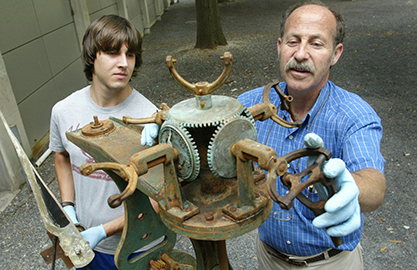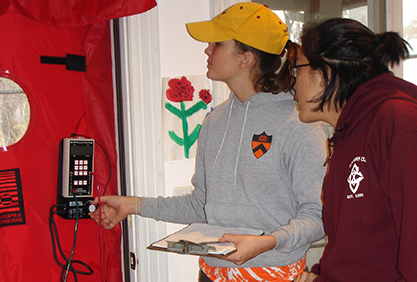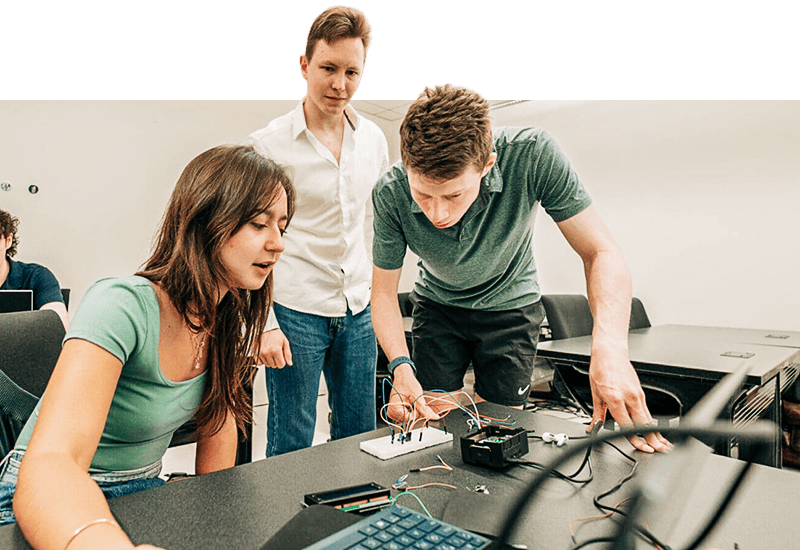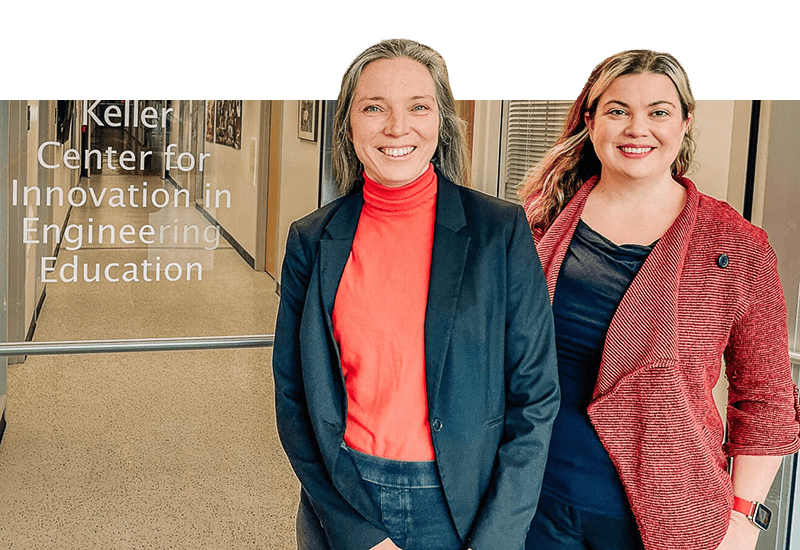Serving community, students inspired by knowing ‘work is real’
By
on
Princeton students are putting engineering into action as they help local homeowners maximize energy conservation, assist with the restoration of a factory in Trenton and educate members of the community about engineering.
The projects are part of a class called “Engineering Projects in Community Service,” which unites teams of students with community organizations to help solve their technology- related challenges. The course, offered by the Keller Center for Innovation in Engineering Education, was launched at Princeton in the 2007-2008 academic year by Edward Coyle *82, who was the Kenan visiting professor for distinguished teaching. Coyle cofounded EPICS at Purdue University in 1995 with Leah Jamieson *77, and it has grown into a worldwide program with 18 participating institutions.

Students in Princeton’s EPICS course are currently partnered with two local organizations. One group is working with the Stony Brook-Millstone Watershed Association to test homes in the Princeton area to determine their “ventilation rates,” or draftiness, and design “green retrofitting” strategies to maximize energy use while maintaining adequate ventilation and indoor air quality. The group, advised by civil and environmental engineering professor Catherine Peters, was recently awarded a $10,000 grant from the U.S. Environmental Protection Agency.
The second group is paired with Isles, Inc., a Trenton-based community development organization, to help revive an old textile factory for community use. Students in the group, advised by mechanical and aerospace engineering professor Michael Littman, have largely completed the restoration of a tower clock from the building and are currently building new clock faces using recycled materials. They also are working with students in the Engineers Club at the John Witherspoon Middle School.
“EPICS connects very strongly with what students want to do with their lives in terms of using their engineering abilities to do something useful,” Littman said.

Peters noted that the work complements more conventional courses in engineering fundamentals. “I have seen the students be very inspired by the fact their work is real-it’s not just a hypothetical problem in a homework assignment,” she said.
Sara Oon, a sophomore majoring in operations research and financial engineering, summed up that difference like this: “It is very gratifying to know that we will be leaving behind a legacy that will probably outlive us.”









